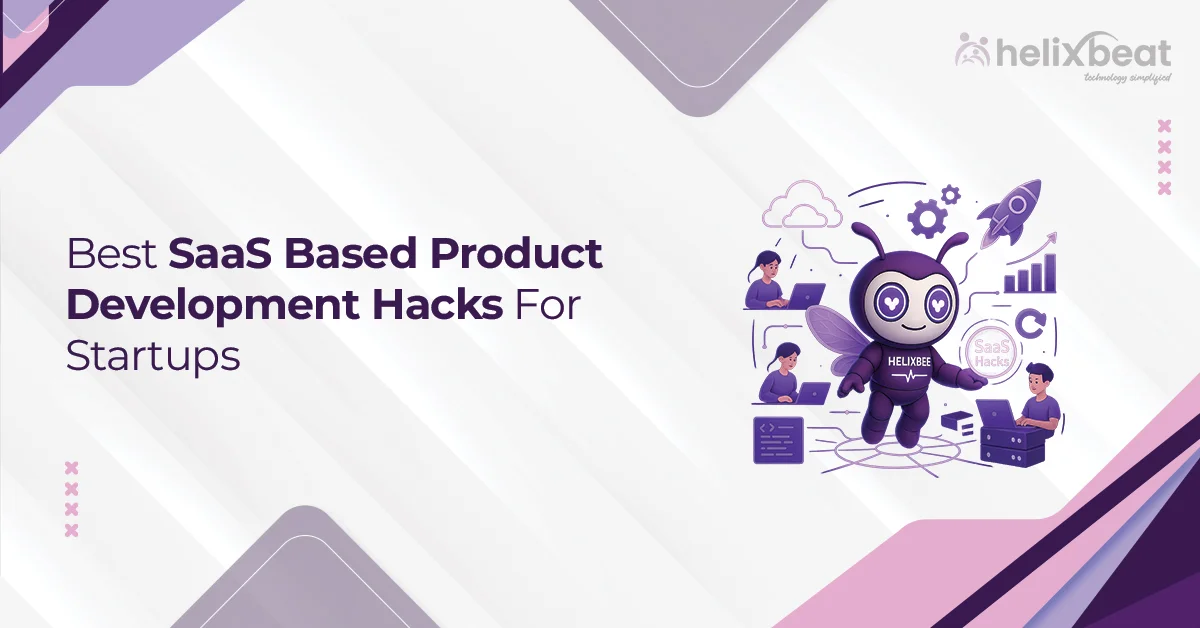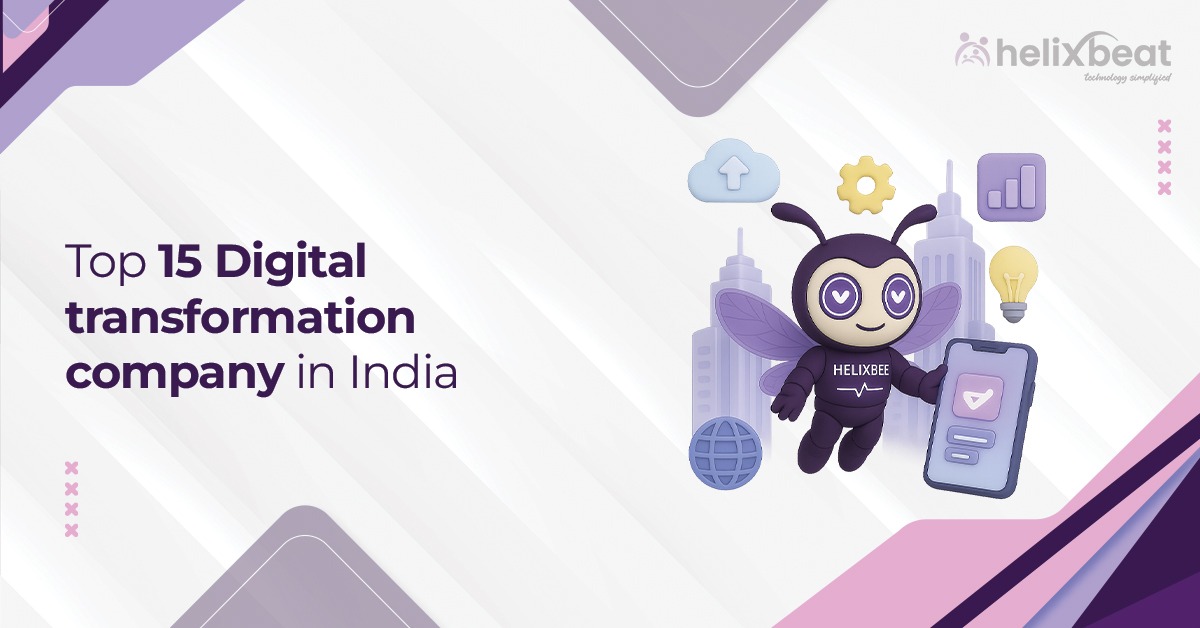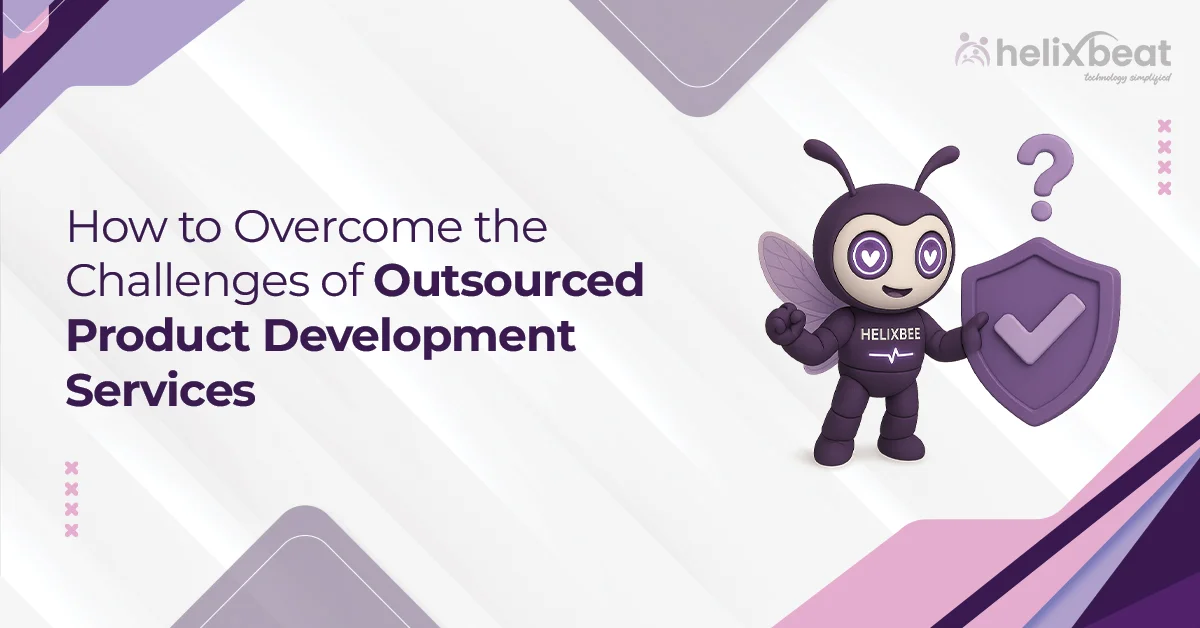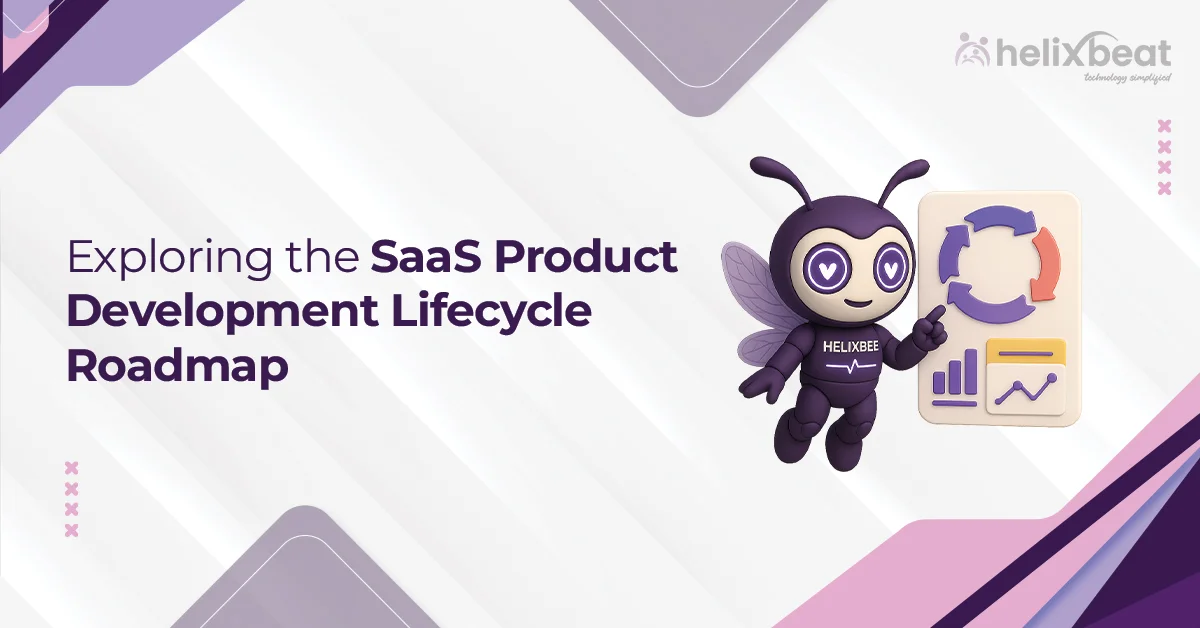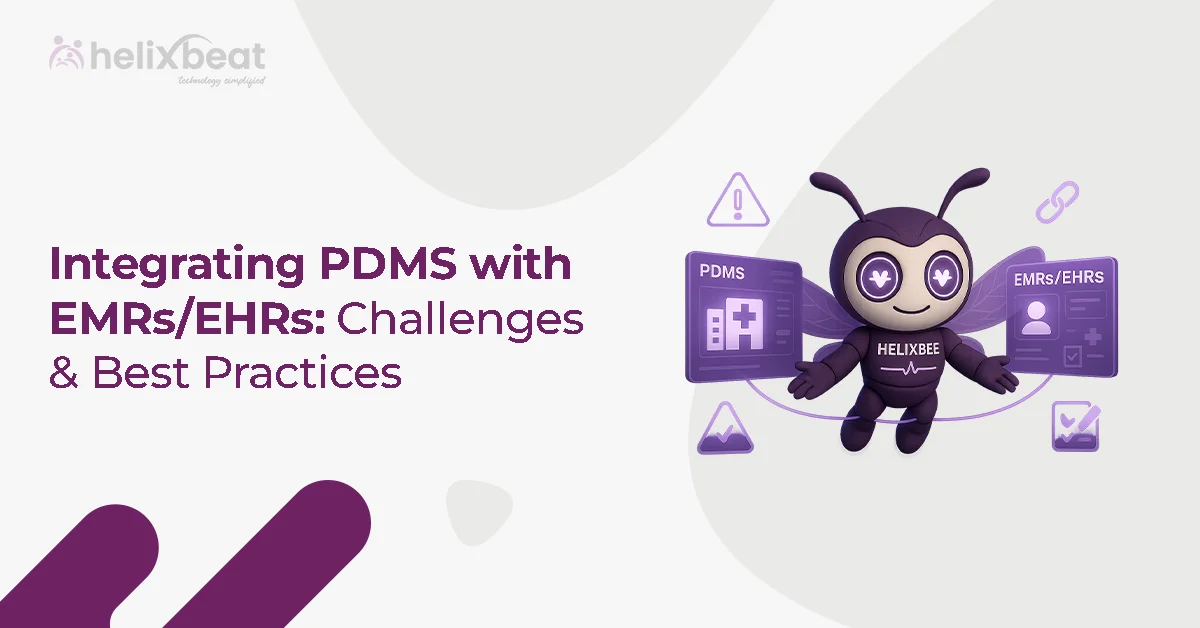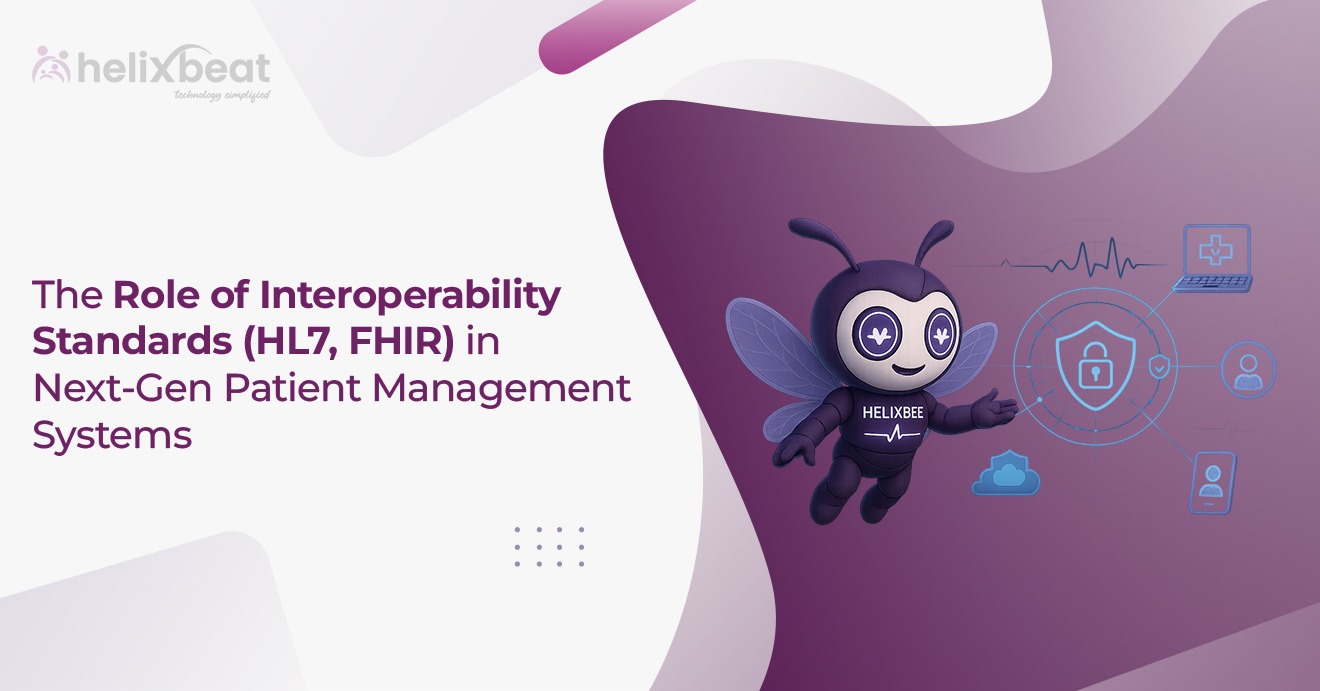Think about the last time you used a mobile app or software tool that made your work easier; maybe it helped you order food, manage your finances, or stay connected with friends. Behind every useful software product, there is a well-planned process called software product development. It is how ideas turn into real software that people use every single day.
In 2025, creating software is more challenging because users expect fast, secure, and smooth experiences. To meet these demands, businesses often collaborate with expert software product development services. These experts take care of the complete process from initial planning to launching software.
Whether you are planning to build a new product or improve an existing one, knowing how development works will save you time and money while giving your users a better experience. In this blog, we’ll explain the step-by-step software product development process and share best practices that help businesses stand out.
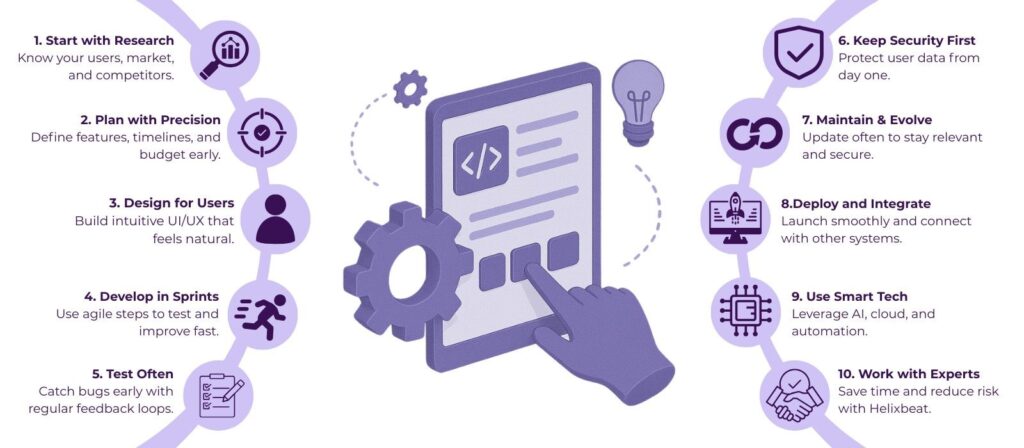
Table of Contents
Overview Of Software Product Development
Software Product Development Services refer to professional solutions that help businesses design, build, test, and maintain custom software products. These services cover the entire development cycle, from initial planning and design to coding and ongoing support.
By partnering with expert teams or a Software Product Development Company, businesses can create high-quality software customized to their specific needs, reduce time to market, and keep their products updated with the latest technologies.
The Software Product Development Process in 2025, Along with Examples
Creating a successful software product involves several important steps. In 2025, this process combines proven methods with the latest technology trends to deliver faster, safer, and more user-friendly software. Here’s a breakdown of the typical stages in the software product development process:
1. Idea Generation and Market Research
Every product starts with an idea. This stage involves understanding the problem your software will solve and researching the market to see what users need and what competitors offer. Clear insights here help shape a strong product vision.
Example: If a startup wants to build a food delivery app that offers healthier meal options. Before developing, they study existing apps and gather user feedback to identify what customers want, such as easy filtering for dietary preferences and quick delivery times.
2. Requirement Analysis and Planning
Next, the team gathers detailed requirements on what features the software must have and how it should work. A development plan is created, outlining timelines, budgets, and resources needed to complete the project successfully.
Example: For the food delivery app, this means defining features like menu browsing, payment options, order tracking, and user profiles. The team plans sprints to develop these features step-by-step.
3. UI/UX Design and Prototyping
Designers create the software’s look and feel with user experience (UX) in mind. Before coding begins, they build prototypes or mockups that show how users will interact with the product.
Example: The design team creates clickable prototypes showing how users will filter meals, place orders, and track delivery. This prototype is tested with potential users to gather feedback before building the final app.
4. Agile Development and Iterative Testing
Developers build the software in small, manageable parts using agile methods. This allows for regular testing and feedback so issues are caught early and improvements are made continuously throughout development.
Example: Developers first create a basic version with core functions like browsing meals and ordering. After testing, they add payment gateways and delivery tracking in later sprints, fixing bugs and improving performance as they go.
5. Deployment and Integration
Once tested, the software is deployed to users. This stage also includes integrating the software with other systems or platforms to work smoothly within existing workflows.
Example: The food delivery app is launched on app stores and integrated with payment processors and GPS tracking systems to provide real-time updates to users.
6. Maintenance and Continuous Improvement
After launch, the work isn’t over. Software needs regular updates, bug fixes, and new features based on user feedback to stay relevant and perform well.
Example: Based on customer reviews, the app adds new filters for allergies and introduces a loyalty rewards program. Regular updates keep the app secure and running smoothly.
By following this process, businesses can create reliable software products that meet market demands and adapt to changing technologies in 2025.
Best Practices for Software Product Development Process in 2025
1. Break Work Into Small Steps and Improve Along the Way
Agile development breaks the project into small parts called sprints, allowing teams to deliver features step-by-step. This method supports regular testing and user feedback so developers can quickly fix issues or add improvements.
By working iteratively, the team adapts to changing requirements and delivers a better product faster than traditional methods.
2. Design Your Software Around What Users Really Need
Designing software with the user in mind ensures the product is easy to use and solves real problems. This involves gathering feedback through surveys, interviews, and usability testing before and during development.
A user-centred approach increases customer satisfaction and reduces costly redesigns later.
3. Keep Security in Mind from the Start
Security plays a vital role. Incorporating security checks and best practices from the very beginning protects your software from vulnerabilities and data breaches.
Regular code reviews, penetration testing, and compliance with industry standards keep your product safe and build trust with users.
4. Use New Technologies to Make Your Product Better
Using cloud services, AI, and automation tools helps speed up development and improve product capabilities. For example, cloud infrastructure allows scalable storage and computing power, while AI can personalize user experiences or automate repetitive tasks. Keeping up with technology trends makes sure your product remains competitive.
Why Choose Professional Software Development Services
1. Get Expert Knowledge and Skills: Professional teams have experienced developers, designers, and testers who know the best ways to build software efficiently and with high quality.
2. Save Time and Speed Up Your Project: Experts follow proven processes and use the latest tools to develop software faster, helping you launch your product sooner.
3. Access the Latest Technology: Professional services keep up with new tech trends like AI, cloud, and automation, ensuring your software stays modern and competitive.
4. Reduce Risks and Avoid Mistakes: With their experience, professionals anticipate challenges early, prevent costly errors, and deliver a more reliable product.
Challenges While Working with Software Product Development Services and How to Avoid Them
1. Poor Communication
Sometimes, the development team and the client don’t understand each other well. For example, if you expect a feature to work one way, but the developers build it differently, it can cause problems later.
How to Avoid: To avoid this, have regular meetings to discuss progress and questions. Use tools like email, chat apps, or project management software to share updates clearly. Also, write down your requirements and feedback so everyone knows exactly what’s needed.
2. Adding Too Many New Features
Scope creep happens when new features or changes keep getting added during the project. For example, you might start with a simple app but later ask for extra functions, making the project longer and more expensive.
How to Avoid: Make a clear list of features before starting. If you want to add something later, review its impact on time and cost with your development team before deciding. This way, you control changes and avoid surprises.
3. Software Has Bugs or Problems
Sometimes, the final software might have bugs or not work as expected. For instance, a payment feature might fail occasionally, frustrating users.
How to Avoid: Ask the development team to test the software regularly during development, not just at the end. This helps find and fix problems early, saving time and improving quality.
4. Project Takes Longer Than Planned
Projects can get delayed if tasks take longer than planned or unexpected problems arise. For example, a key feature might take more time to develop, pushing the launch date back.
How to Avoid: Break the project into smaller parts and track progress often. If a delay happens, discuss it immediately with the team to find solutions. Setting realistic timelines and being flexible helps keep the project on track.
Final Thoughts
Choosing professional software product development services helps you to build efficient applications. And the experts will build your product faster, avoid mistakes, and use the latest technology.
Helixbeat’s product development service offers complete support from Start to finish. Our team knows how to work in easy steps and uses modern tools to create software that is safe, scalable, and simple to use.
We keep you updated throughout the process so you always know what’s happening. Whether you are building new software or improving an old one, Helixbeat works closely with you to build excellent software that outperforms the market. Contact Helixbeat today to bring your unique idea into real software.
FAQ:
1. What is software product development?
Software product development is the process of planning, designing, building, testing, and launching a software product. It turns an idea or need into working software that users can use to solve problems or make tasks easier.
2. What are the four major types of product development?
The four main types are creating new products, improving existing ones, adapting products for new markets, and expanding product lines with related offerings.
3. What is product-based software development?
Product-based software development focuses on creating software products that are sold to many customers. These products are designed to meet common needs and are usually available as commercial software or apps.
4. What does a software development company do?
A software development company plans, designs, builds, tests, and supports software for clients. They have teams of developers, designers, and testers who work together to create software solutions based on the client’s needs.
5. What is product development in the IT industry?
In the IT industry, product development means creating software or technology products from the idea stage through design, coding, testing, and launching. It involves continuous updates to keep the product useful and competitive.
6. How to build a software product?
To build software, first research and plan, then design and prototype, develop the code, test for issues, launch the product, and keep maintaining it based on feedback.





